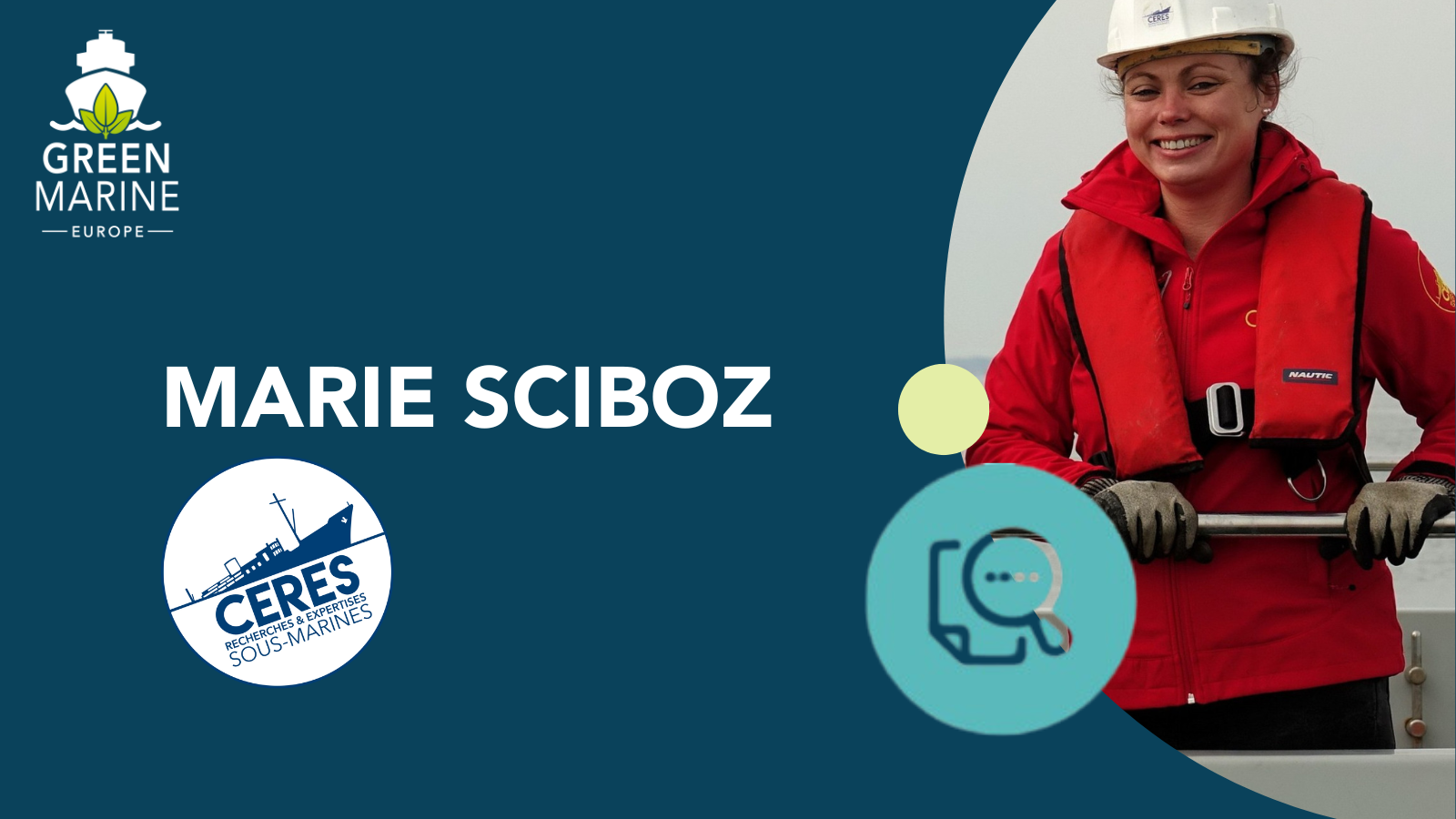
Portrait of Marie SCIBOZ, Green Marine Europe Verifier
The credibility of Green Marine Europe’s certification process is based on the external verification of the candidates’ results following their self-assessment.
As the candidate’s external verification phase is in full swing, discover the Green Marine Europe accredited verifier. Today, Marie SCIBOZ.
What is your current career and profession?
My name is Marie, I am 34 years old and I am currently the CEO of CERES, a company specializing in underwater research and expertise. Before that, after studying in New Caledonia, I worked for seven years as a hydrographer on cable vessels.
As head of CERES, I have acquired experience in all the phases and procedures related to shipwrecks, from expertise and cartography to the management of pollution and underwater interventions, including the refloating of the vessels and dismantling in compliance with environmental rules. As a representative for the oceanographic part of the company, I am also responsible for developing preliminary studies and final reports, requiring great skill in cross-checking data and information.
Thanks to my experience and mastery of these elements, I am now a Green Marine Europe certification verifier.
Thanks to my professional background and my entire life, embedded in the maritime world, I have an objective look at the global maritime industry, which allows me today to lead CERES successfully and to carry out audits for the certification.
What does it mean to be a verifier for Green Marine Europe?
My mission is to verify that maritime companies comply with the grid of indicators established by the Green Marine Europe program.
My main role is to draw up an inventory of environmental performance with the shipowners and to provide recommendations and practical advice to shipping companies to help them improve.
What is the most iconic GME indicator for you, which best symbolizes its continuous improvement approach? And why?
The most representative indicator of the Green Marine Europe program is the "carbon footprint", which measures ships’ greenhouse gas emissions. This indicator is highly symbolic as it shows the program's commitment to fighting climate change and encouraging more sustainable and environmentally friendly practices in the maritime industry. Nevertheless, the end-of-life indicator for ships is just as important. However, it is often less well known because it highlights the need to recycle ships responsibly and prevent pollution.
What do you see as the greatest challenge of maritime transport?
Probably the biggest challenge facing tomorrow's maritime transport is to achieve complete decarbonization of the industry to reduce its carbon footprint and fight climate change. It will be necessary to develop alternative propulsion technologies, use cleaner fuels and promote more sustainable transport practices. However, one of the biggest challenges to overcome will be finding a balance between economic imperatives and environmental requirements for a competitive shipping industry while ensuring the sector's long-term sustainability.